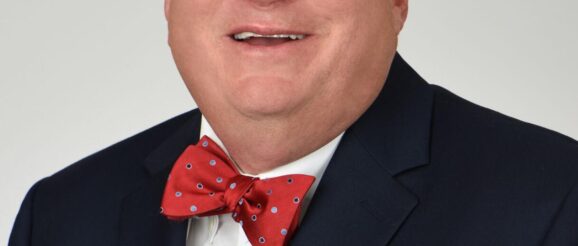MUSC elects new dean, plans tower replacement for new innovation corridor

The board of Medical University of South Carolina elected a new dean of the College of Medicine Dec. 9 and voted to replace an aging clinical tower. But the new building will be part of a larger corridor for innovation in downtown Charleston that could also incorporate the Roper Hospital building once Roper moves to North Charleston, MUSC President David Cole said.
The MUSC Board of Trustees unanimously selected Dr. Terrence “Terry” Steyer as dean and vice president of Medical Affairs for the college, and his appointment prompted a standing ovation from the board and the audience present for the meeting.
““I am humbled by the confidence that the MUSC Board of Trustees has in my leadership and thrilled to be able to continue to serve the citizens of South Carolina by leading the College of Medicine in discovering new cures and training the next generation of physicians while providing high-quality patient care,” Steyer said in response.
Steyer, who is chair of the Department of Family Medicine at MUSC, had served as interim dean since April. And while there was a national search for the permanent job, it also gave the board and MUSC leaders a chance to evaluate Steyer against those other candidates, and they liked what they saw, Cole said.
“As interim, he’s grown as a leader and he’s demonstrated that by taking on different things that keep the college moving forward,” Cole said. “I have high confidence in Terry. Very excited to get him into a permanent role.”
The board also appreciated Steyer’s work as interim and “we look forward to his leadership of this incredibly important statewide resource for the education of some of the country’s finest physicians, as well as helping to drive our research and clinical enterprise to new levels,” said Dr. James Lemon, the board chair.
The board also voted to pursue the required Certificate of Need state license to replace Rutledge Tower medical office building and its clinics, operating rooms and specialty pharmacy. The estimated cost would be around $114 million, according to MUSC officials. The building is the former Bon Secours St. Francis Hospital, which MUSC acquired after it moved to a West Ashley location in 1996. The building itself was decades old then, although MUSC could not provide an exact age.
It was needed at the time for clinical space but it has become clear a replacement is needed, Cole said.
“It’s a very old facility and the upkeep on that is becoming hard to justify,” he said.
But while it will continue to provide clinical services, including serving the surrounding area, what will come after will be different and better serve future needs, Cole said. The project, which is a next phase of how MUSC Health has been replacing and upgrading its clinical facilities, will also incorporate the idea of creating an “innovation corridor” along Calhoun Street.
“We have prime real estate as part of our health care enterprise, we want to get it redeveloped to meet the future,” Cole said. With the Rutledge Tower, that could mean partnerships with industry or other academic institutions, such as the College of Charleston, he said.
Medical University of South Carolina would like to acquire the building and property of Roper Hospital after it moves to North Charleston in coming years. The property could become part of an envisioned “innovation corridor” along Calhoun Street, MUSC President David Cole said. Andrew J. Whitaker/Staff
Roper would also fit nicely into those plans. Roper announced last month it would relocate from its downtown location to a campus in North Charleston. But that move also requires a CON, which could set off a fight with competitors who could tie up the process with appeals, potentially for years. But MUSC has made no secret of its wish to acquire the property, which sits in the center of the MUSC downtown campus, once it is vacated, Cole said.
“We’ve had a ton of conversations” with Roper’s leadership, he said. “The simplest way I can put is that is, on our campus, the hole in our doughnut.”
The building itself, which opened in the mid-40s, is not necessarily the draw as it is the property itself. While it would also still serve a clinic purpose, adding to the growing complex, high-level care delivered downtown, it would also lend itself to research, education and other innovation that could help the area flourish, Cole said.
“There is a generational opportunity to redevelop, for delivery of health care, education, academics in a manner that could be a thriving innovation district, which would be an economic, knowledge-based driver for this region,” he said.
